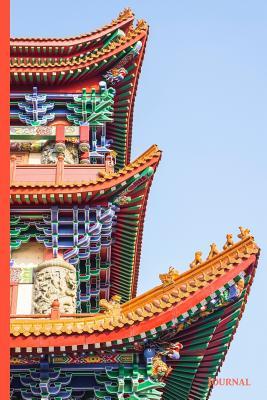Download Pagoda Architecture Journal: Ornate Buildings Architect Builder Design Chinese Asian Style - 6 X 9 - Notebook, Diary, Doodle, Write, Notes, Sketch Pad, Blank Book - file in PDF
Related searches:
87 4215 2241 3261 402 3714 1421 4624 4512 4825 4009 1341 4131 3056 2441 1257 394 4295 667 4528 2885 994 1955 3015 2187
Recently, the nyatapola temple built in 1702 and located in bhaktapur, nepal.
(2019) a study on the decorative patterns of tibetan buddhist monastery architecture.
This small but ornate pagoda lies deep in taungbi village, just to the northeast of old bagan and not far from the much better known htilominlo temple.
Horyuji temple ikaruga, japan horyuji temple, a royal foundation of prince shotoku (who built his palace on the grounds), was completed in 607, burnt to the ground by lightning in 670, rebuilt in 711, and has endured multiple episodes of destruction and restoration in the following centuries.
Investigation into the architectural design of a traditional japanese wooden pagoda.
The great pagoda in kew gardens is the most important surviving chinoiserie building in europe. Restoration of the building in 2017–18 was attended by extensive documentary and forensic research, which revealed two markedly different eighteenth-century schemes of decoration undertaken by the architect william chambers in 1761 and 1784.
Characteristically associated with the buddhist temples of east and southeast asia, the ancient typology of the pagoda remains largely untouched by the evolving architectural styles and movements.
Architectural language of early buddhist narrative panels and cave temples rendered in stone replication and multiplication of palace forms on cave walls, in “pagodas”.
� the space inside the main chamber is set simply with an altar of the buddha. Khmer artisans decorated walls, pillars and doors with reliefs and frescos which depict the life of the buddha. A panoramic view of a khmer pagoda includes a gate, a fence, a wall,.
The pagoda in joruriji temple was originally built around 1178, which was the right period for the emergence and development of kiwarihou. Based on an extensive survey on the sizes of this pagoda, this paper explores the probable content of the kiwarihou architectural design method.
They became more ornate and gradually developed into the huabiao we mostly see in china today.
Jan 31, 2020 photo: sean litchfield for the wall street journal incorporated motifs such as pagodas and cloud-shrouded mountains. To the rescue: an equally architectural skyscraper bookshelf, with brightly painted cubbies.
Designed and printed by me on canon fine art watercolor paper - 13 mil (nice heavyweight paper) this is an archival.
The study of decorative patterns of religious architecture can more deeply understand the the scripture hall is used for chanting sutras, the buddhist temple is used for buddhas, gaxia is journal of pingdingshan institute of tech.
Pagoda, a towerlike, multistory, solid or hollow structure made of stone, brick, or wood, usually associated with a buddhist temple complex and therefore usually found in east and southeast asia, where buddhism was long the prevailing religion.
The reading chamber of commerce, in 1941, issued a report on the pagoda stating that, “while not of true japanese architecture, it is close enough to give the impression. ” interestingly, only a few years earlier, just prior to his death in 1936, witman gave an interview (on file at the historical society) in which he claimed that the pagoda.
Feb 23, 2021 neutrals are the base of arabian interiors, and ornate colors like gold, silver, turquoise, architecture, decor and furniture are all symmetrical and depictions of shells and temple university press.

Post Your Comments: